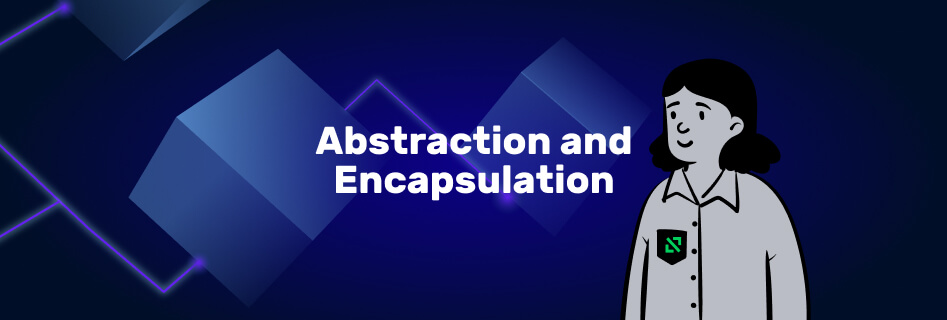
6 Most Popular Computer Coding Languages in 2024
Nowadays, the competition in the field of IT is intense. To stay in demand, IT professionals must have a solid grasp of different programming languages: the more, the better. If your goal is learning new skills, advancing your career ladder, or making a career switch, one of the first questions you may be facing is what languages to learn in 2024. There are numerous options, and one of the best ways to assess their popularity and relevance is through the TIOBE index. The index gives a programming languages list sorted by the number of web queries, which we’ll revisit a bit later.
This article explains the basics and lists the 6 most popular types of programming languages according to the TIOBE index as of March 2024, along with an overview of their pros and cons. Let’s dive in!
What Is a Programming Language?
A programming language is a specialized language used as a way to communicate between programs and developers or programmers. It’s an aggregate of a set of instructions or rules that enable the conversion of textual values to the various forms of machine code (or graphical components in the case of visual programming languages). With its help, programmers can execute different operations, ranging from simple calculations to complex software applications.
Major Types of Computer Languages
According to Wikipedia, there are now more than 700 different types of code language that have their own syntax, semantics, and purpose. Primarily, these languages are divided into two subsets — low-level programming languages (e.g., Assembly) and high-level languages (e.g., Python, Java). However, that’s not all. Further research on this subject will reveal more types of languages that you should familiarize yourself with before settling for a particular one.
These different types of programming languages include:
- Procedural
A procedural programming language uses statements, commands, and functions and follows a linear approach to problem-solving. It typically focuses on procedures executed step by step. C, FORTRAN, BASIC, Pascal, and Java are all procedural programming languages.
- Functional
Functional programming languages treat computation as the evaluation of mathematical functions. They avoid changing state or mutable data and often use recursion and functions to repeat a task until a specific condition is met. These languages include Haskell, F#, Clojure, and Elm.
- Object-oriented
The object-oriented programming language, or OOP, organizes and encapsulates data as objects rather than functions and logic. It emphasizes inheritance, encapsulation, and polymorphism, promotes reusability, and aims to reduce code complexity. Examples of OOP are Python, Java, C#, Ruby, and PHP.
- Scripting
Scripting programming languages are used to create, develop, and improve operating systems and applications’ functionality. Programmers also utilize them to automate tasks. These languages are interpreted rather than compiled and can execute code quickly. Examples include PHP, JavaScript/ECMAScript, Ruby, Python, and Perl.
- Logic
Logic programming languages differ from the programming language types discussed above. They are utilized mainly to convey restrictions regarding statements, allowing developers to consider all possible outcomes of other actions. The following are a few logic programming languages: ALF, ASP, Alice, and Alma-0.
Now that you know the basics, let’s move on to our top computer programming languages list.
List of Programming Languages in Demand This Year
Here’s our list of the top 6 programming languages you can learn in 2024 to land a job with hefty compensation:
- Python
- C
- C++
- Java
- C#
- JavaScript
Moving forward, let’s focus on the nuances of each of the computers languages listed.
1. Python
Python, which dates back to 1989, can be named a relatively new programming language compared to other languages. It is called “Python” due to its versatility to match most of the emerging application domains. Being an interpreted language, it involves features like automatic memory management and assistance for OOP. Additionally, it puts an emphasis on developer experience and has a user-friendly design.
Due to its versatility, the language is used for various applications, especially in web development. It has also recently become popular in machine learning and AI.
The greatest benefit of Python is that it creates many job opportunities, allowing even the novice to find work and progress in their career.
Pros:
- Very easy to learn.
- Flexible and readable.
- Dynamic typing.
- Support for asynchronous code.
Cons:
- Slow performance.
- Executes only one thread at a time.
- Isn’t compatible with iOS or Android.
2. C
The next on our list of most popular computer programming languages is C, introduced in 1972. It had been at the top of the high-level programming languages until the advent of Java. C also had a big impact on the creation of early operating systems, including Unix and IBM System/370, and gained most of its reputation for speed. It had remarkable performance on older systems with limited processor power and memory, which made it ideal for speed-sensitive operations.
Notwithstanding the advancements in technology, C still remains popular, especially in system development (e.g., operating systems, embedded devices, firmware). Its standard library had been ported to a range of platforms, making it viable in many use cases. However, C tends to have fewer job openings compared to other languages on the list.
Pros:
- Moderately easy to master.
- Highly portable and maintainable.
- Serves as the foundation for other widely used languages.
Cons:
- Lacks built-in safety features (e.g., exception handling).
- Limited to systems coding.
3. C++
C++ is an extension of C that has object-oriented capabilities included within it. The name “C++” is derived from the “++” operator used in C. This language was developed to modernize the older languages by introducing them to faster platforms.
C++ occupies a similar area in the market to C, including low-level hardware development and systems programming. Nevertheless, with the development of standard C++ libraries and specifications, C++ has met criticisms considering its complexity and steep learning curve.
Pros:
- One of the most stable languages.
- Reusable design components.
Cons:
- Difficult to learn.
- Abundance of features can have a negative impact on performance.
4. Java
The Java programming language, first introduced by Sun Microsystems in 1991, is the most widely used application development language. Its syntax is similar to that of C/C++, with curly braces to frame blocks and semicolons to mark the end of statements. At the time of release, Java was breaking new ground due to automated memory management, especially as manual memory management was widely used in C and C++.
Another factor of Java’s appeal, in addition to memory management, was its capability to load on multiple platforms, including the “write once, run anywhere” concept that Java popularized at the time.This was made possible through JVM (Java Virtual Machine), which compiled and executed Java bytecode. Nowadays, JVMs run on the most common OS, namely Linux, Mac, and Windows.
Applied widely in business, web, and mobile systems, Java is the language for both Google’s Android OS and numerous embedded devices. As it’s the most common application language, Java development skills are in big demand in the industry.
Pros:
- Runs on any machine.
- Large ecosystem of libraries and frameworks.
- Highly compatible across versions.
Cons:
- Verbose if compared to Python.
5. C#
The next one of the popular programming languages to learn in 2024 is C#, created and introduced by Microsoft in 2000. It operates as an object-oriented language that compiles into .NET Intermediate Language. In terms of syntax, C# closely resembles Java and C/C++.
Initially, C# found applications in Microsoft-centric development, particularly for Windows Forms and web development using ASP.NET. However, the .NET ecosystem has since expanded with the advent of .NET Standard and .NET Core. These newer frameworks and standards are cross-platform, supporting operations on Windows, Linux, and Mac systems.
Nowadays, C# is widely used for both desktop and web application development, often within environments heavily reliant on Microsoft technologies. Microsoft’s Xamarin framework enables developers to create Android and iOS applications using C#. Additionally, C# is suitable for certain systems programming tasks, with available libraries for embedded systems.
Pros:
- Offers robust cross-platform capabilities if combined with .NET.
- Supported by Microsoft, with a strong community.
- Simple syntax.
Cons:
- Slow and difficult to learn.
- Highly dependent on .NET.
6. JavaScript
JavaScript is a high-level, dynamically typed language that uses Java-like syntax. It was introduced in the mid-1990s and primarily used for scripting code executed within web browsers on the client side. Early instances of its application include features like “infinite scrolling” in Google Maps. Now, all major web browsers support it.
Frameworks such as React, Angular, and Vue follow a Model-View-Controller development pattern, entirely executed within the browser. JavaScript can also be combined with HTML to build mobile applications that run on different platforms. And there’s a special web server, NodeJS, that lets programmers use JavaScript on the server side.
Given the use cases, this coding language is in high demand. It’s not too difficult to learn, but there are some advanced techniques that might take a while to master and require some JavaScript homework help. Therefore, if you prefer a more structured approach, consider TypeScript, which has object-oriented features and syntax and compiles down to native JavaScript.
Pros:
- Highly popular and easy to learn.
- Quick development/debugging.
- Widespread and versatile.
Cons:
- Lacks strict enforcement of good coding practices, often resulting in bad code.
- Executing on the client side poses security risks.
So, What Coding Language to Choose?
Now that we’ve introduced you to the different code languages, it’s time to decide which one is best suited for your project and personal objectives. If you’re completely new to programming, it’s advisable to select a language from the top 3, as they typically offer extensive community support and abundant learning materials. However, if you’re more experienced or specialize in a particular field like Data Science, you can afford to be more selective.
Happy learning, and remember that Programming Assignment is available 24/7 to assist you with any coding task, including code review and debugging!



